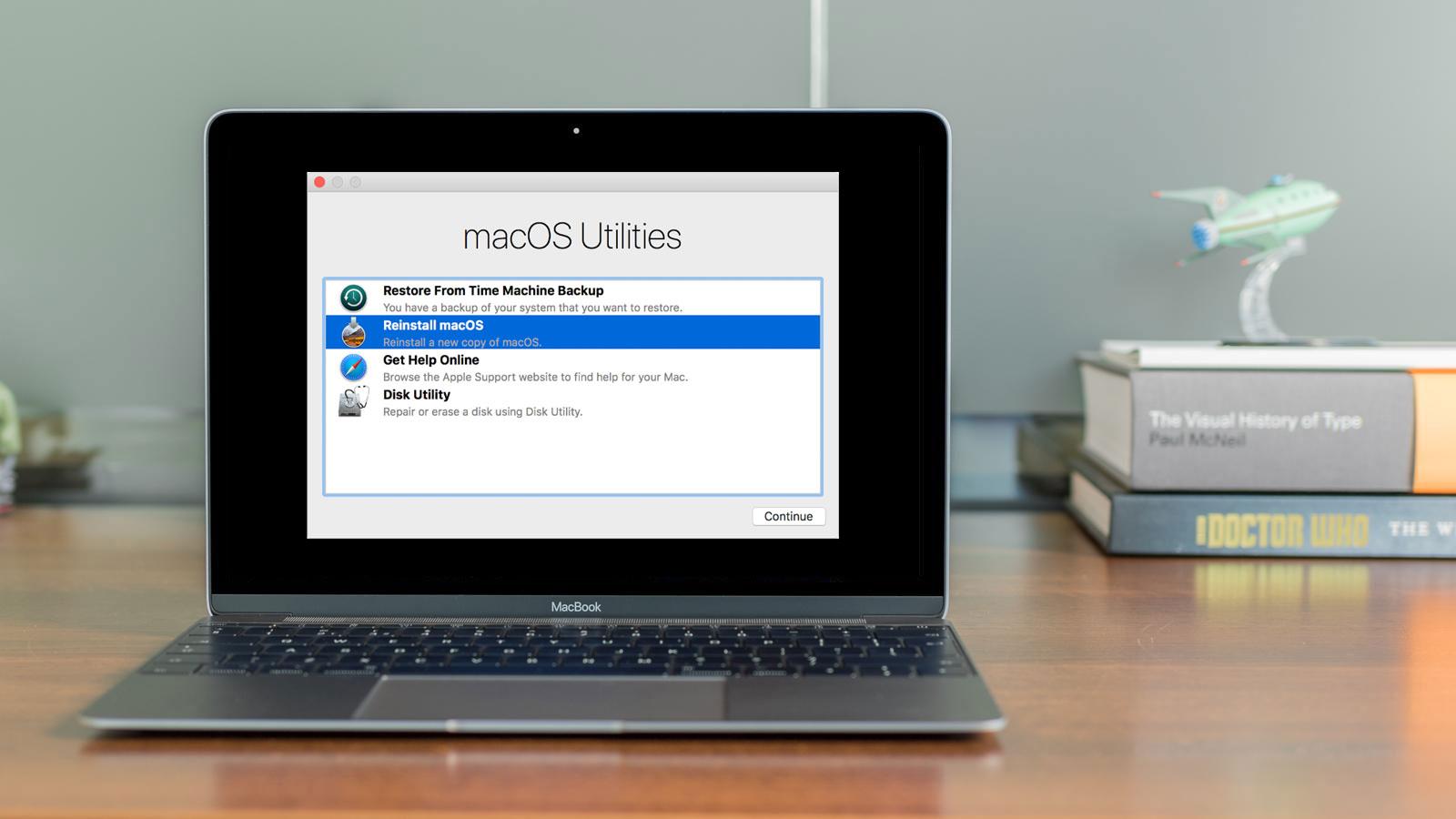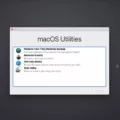Mac OS is a powerful and reliable operating system that is used by millions of people all around the world. It is renowned for its stability, ease of use, and features that make it a great system for both home and business users. However, like any computer system, Mac OS can sometimes experience issues. Fortunately, Mac OS has several features built in to help you troubleshoot and recover from any problems you may encounter.
One of the most important recovery features in Mac OS is the Recovery HD partition. This partition contains a copy of the Mac OS installer that allows you to repair your system or install a new version of Mac OS. To access this partition, you need to start up your Mac while pressing the Option key on your Windows keyboard (in other words, press Alt). This will bring up the Startup Manager which will give you access to the Recovery HD partition. Once selected, click on the upward-pointing arrow below it to boot from Recovery HD. After a brief delay, you’ll see the Mac OS X Utilities screen where you can manage disk partitions, restore from backups, reinstall Mac OS or even reformat your hard drive if necessary.
In addition to accessing Recovery HD through the Startup Manager, there are also several other ways to start up from macOS Recovery. You can hold down Command (?)-R while starting up your Mac or hold Option-Command-R or Shift-Option-Command-R while starting up your computer to access macOS Recovery over the internet. Depending on which key combination you use, macOS Recovery will install different versions of macOS accordingly.
Finally, if you’re using a Windows keyboard with your Mac Mini computer then there’s one more way you can access macOS Recovery; simply hold down Ctrl + F12 for a few seconds until the shutdown menu appears on the screen. From here select “Reboot” and then choose “Recovery” from the list of options that appear after restarting your machine – this will launch macOS Utilities just like with the regular startup mode described above.
Overall these various methods should cover almost any situation when it comes to recovering your Mac OS installation or managing disk partitions on your hard drive – so hopefully now if something ever goes wrong with your system then you’ll be prepared!

Accessing Mac Recovery with a Windows Keyboard
If you have a Windows keyboard and are trying to access Mac recovery, you’ll need to start your Mac while pressing the Alt key (on your Windows keyboard) until the Startup Manager appears. From there, select Recovery HD and then click the upward-pointing arrow below it to boot from Recovery HD. After a brief delay, you should see the Mac OS X Utilities screen.
Using a Windows Keyboard to Reset a Mac
Yes, you can reset a Mac with a Windows keyboard. To do this, first, make sure that the Mac Mini is powered off. Then simultaneously press and hold the Windows key and ‘R’ key on the Windows keyboard, and then press and hold the power button on the Mac Mini until the MacOS Utilities dialog appears. Release all of the keys and power button once this appears. From here, you can use the Disk Utility option to erase (or format) your disk.
Keyboard Combination for macOS Recovery
The keyboard combination for macOS Recovery is Option-Command-R or Shift-Option-Command-R. When using this combination, macOS Recovery will install different versions of macOS depending on the key combination that was used. To start up from the built-in macOS Recovery system, you can use Command-R.
Forcing a Mac to Restart with a Windows Keyboard
If you are using a Windows keyboard on a Mac, you can force the Mac to restart by holding down the Control + Option + Command + Power/Eject keys simultaneously for a few seconds. This will bring up a dialog box prompting you to confirm the restart. Once confirmed, the Mac will begin to shut down and then boot back up.
Factory Resetting an iMac Without a Mouse
To factory reset your iMac without a mouse, you will need to use the keyboard. First, power off your Mac and then restart it while holding down the Command+Option+R keys until you see the Apple logo. This will take you to the macOS Utilities screen. Use the arrow keys to highlight Disk Utility and press the tab to select the Continue button. Next, highlight your Mac’s hard drive or SSD and click on Erase. Select Mac OS Extended (Journaled) as the Format and pick a name for your drive. Finally, click Erase and when it has finished, select Quit Disk Utility from the menu bar at the top of the screen. You will now be taken back to macOS Utilities where you can select Reinstall macOS, follow any onscreen instructions and your iMac will be factory reset.
Resetting a Mac Without a Recovery Key
If you don’t have your Mac’s recovery key and need to reset your Mac, you can try resetting the Parameter RAM (PRAM). To do this, restart your Mac while holding down the ‘Command+Option+P+R’ keys until you hear the startup chime for a second time. This should reset the PRAM, which may allow you to access some of the features of your Mac without needing a recovery key.
Booting Mac Into Recovery Mode Using Wireless Keyboard
To boot your Mac into Recovery Mode using a wireless keyboard, press and hold the “Option” key while rebooting or power cycling your Mac. This will bring up the Startup Manager, which is the screen where you can select bootable volumes. Select your Recovery Partition from this menu and it will boot into Recovery Mode. If you don’t see the Recovery Partition listed in the Startup Manager, make sure that you have a working connection between your wireless keyboard and Mac.








